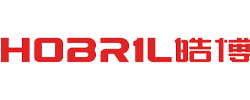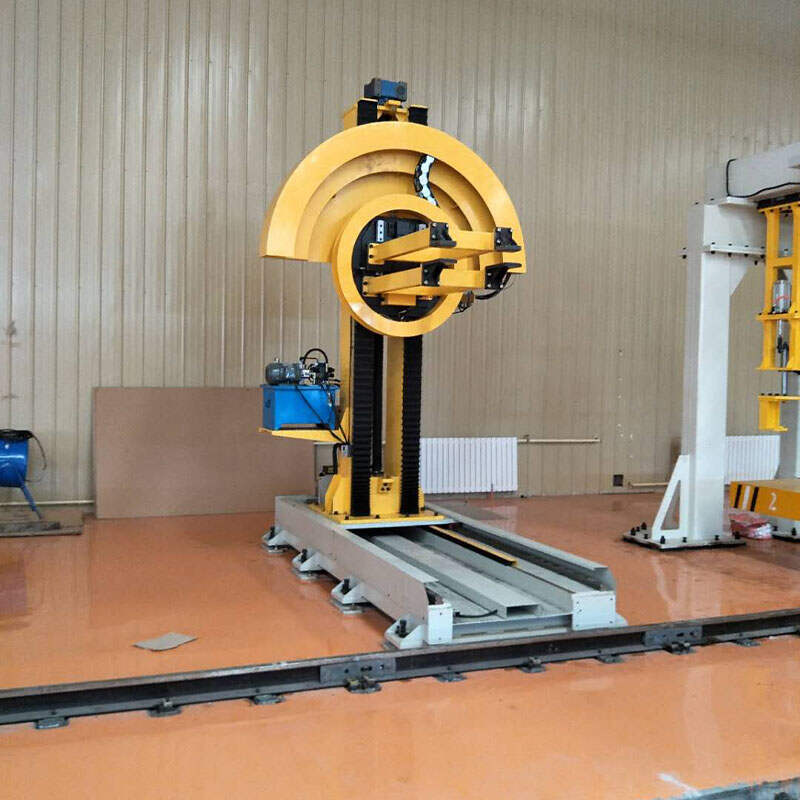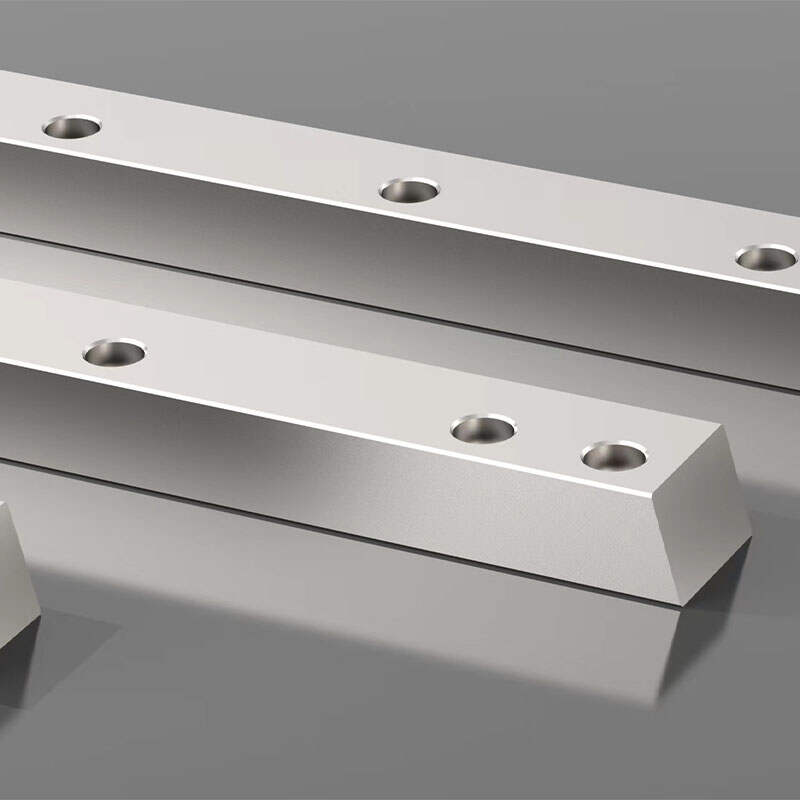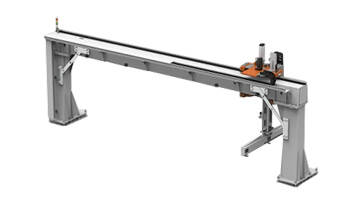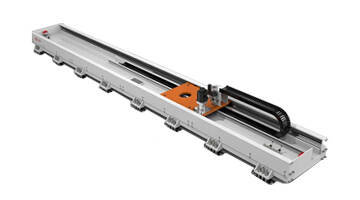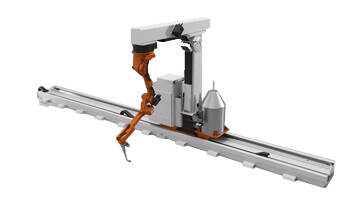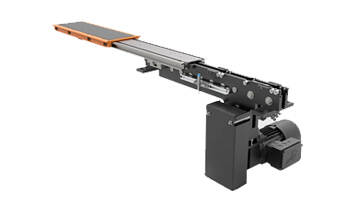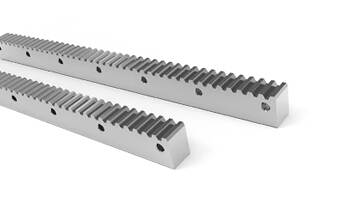خطأ في تنسيق البريد الإلكتروني
emailCannotEmpty
emailDoesExist
pwdLetterLimtTip
inconsistentPwd
pwdLetterLimtTip
inconsistentPwd

أجزاء مهمة
أجزاء مهمة
(4)The important parts of a Telescopic Fork System are crucial for its operation, durability, and efficiency. Each component plays a specific role in ensuring the system can extend, retract, and carry heavy loads safely. Below are the key parts of a telescopic fork system:
1. Forks (Fork Arms)
- Function: The main lifting component, used to carry or support materials.
- Features: Typically made from steel or high-strength alloys to withstand heavy loads. They are designed to extend and retract to adjust the reach and load capacity.
2. Telescopic Arm
- Function: The core structure of the system that allows the forks to extend and retract.
- Features: This arm consists of multiple segments that slide into each other. The strength and smooth movement of the telescopic arm are essential for the system's functionality.
3. Hydraulic System
- Function: Powers the movement of the telescopic arm (extend and retract).
- Features: This system includes a hydraulic cylinder, hoses, valves, and a pump. The hydraulic system provides the force necessary to extend or retract the forks based on operator commands.
4. Hydraulic Cylinder
- Function: A critical component of the hydraulic system that controls the extension and retraction of the telescopic forks.
- Features: A robust cylinder filled with hydraulic fluid that, when pressurized, forces the forks to extend. When the pressure is released, it retracts the forks.
5. Frame or Chassis
- Function: The main body or structure that supports the telescopic fork system.
- Features: Made of heavy-duty material (usually steel), the frame houses the telescopic arms, hydraulic cylinders, and other components. It ensures that the entire system is stable and secure during operation.
6. Extension Mechanism (Sliding or Telescopic Mechanism)
- Function: The mechanism that allows the forks to slide in and out, providing the desired length and reach.
- Features: This mechanism typically includes rails, sliding bushings, and locking pins that help extend or retract the forks smoothly.
7. Fork Attachment
- Function: This part connects the forks to the base of the system (e.g., forklift or telehandler).
- Features: Often adjustable, it allows the forks to be positioned at different angles or heights to handle different load sizes and types.
8. Control System
- Function: Allows the operator to control the movement and extension of the forks.
- Features: This can be a manual control system or a more advanced electronic control system. It often includes buttons, levers, or joysticks to operate the hydraulic system and adjust fork positions.
9. Safety Locks or Pins
- Function: To secure the fork in place and prevent accidental extension or retraction during non-operation.
- Features: These locks or pins engage and disengage to ensure the forks remain stable and safe when not in use or when lifted at maximum height.
10. Lift Cylinder
- Function: Lifts the entire system or forks vertically.
- Features: Located in the frame, it works in tandem with the hydraulic system to raise the fork arms or load to the desired height.
موضع
يعد الموضع مكونًا متعدد الاستخدامات في الأتمتة الصناعية ، مصممًا لمعالجة قطع العمل في مواقع مختلفة لعمليات مثل اللحام والرسم والتفتيش. إنه يعزز المرونة التشغيلية والكفاءة من خلال قدرات الحركة متعددة المحاور ، ودمج آليات الدقة مثل مخفضات RV ومحركات المؤازرة لتحديد المواقع عالية الدقة.
Guideways الخطية
تعد Guideways الخطية ، المعروفة أيضًا باسم Rails Guide ، مكونات الحركة الخطية المهمة في الأتمتة الصناعية ، مما يوفر إرشادات سلسة ودقيقة لنقل الأجزاء على طول المحاور الأفقية أو العمودية. هذه الإرشادات الخطية ضرورية للحفاظ على الدقة والاستقرار في المعدات الميكانيكية المختلفة ، من أدوات الآلة إلى الأنظمة الآلية وآليات الأبواب المنزلق.
رف
الحامل ، المعروف أيضًا باسم رف التروس ، هو مكون من مكونات التحكم الخطية في تحويل الحركة الدورانية إلى حركة خطية داخل أنظمة الأتمتة الصناعية. معروف بدقة الدقة ، وسعة الحمل ، والمتانة ، تم تصميم رفوفنا لتوفير تحديد المواقع عالية الدقة أمر أساسي لمختلف الآلات الآلية والمعدات.
جناح الطائر
تعتبر الأجنحة مكونات أساسية في الأتمتة الصناعية ، حيث تعمل كعمود تخطي لنقل الطاقة الميكانيكية وتحويل الحركة. إن الأجنحة الخاصة بنا عبارة عن عجلات مسننة ذاتية الدقة مصممة لتحويل الحركة الدورانية ، وضبط السرعات والعزم ، وتوفير تغييرات اتجاهية دقيقة في الأنظمة الآلية المختلفة.
